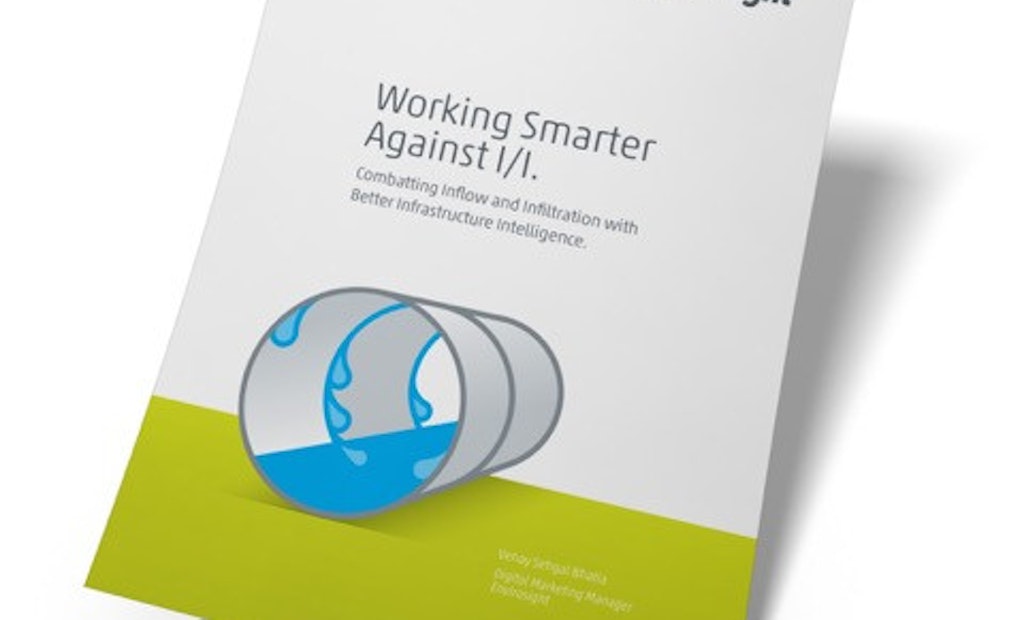Interested in Manholes?
Get Manholes articles, news and videos right in your inbox! Sign up now.
Manholes + Get AlertsLet’s face it, finding and removing excessive inflow and infiltration isn’t easy, and it’s not cheap. With shrinking budgets and continued deterioration of aging infrastructure, there are compelling reasons to support a proactive and intelligent approach to combatting I&I. Municipalities often decide to focus their financial resources “in the ground” (i.e., rehabilitating) instead of on planning and investigating. Yet, an analysis-driven strategy can dramatically increase the amount of I&I resolved for a given budget. Envirosight recently published a new whitepaper that explores an analysis-driven approach to combatting I&I. The paper discusses the tools needed to evaluate different elements of a sewer system and better address I&I.
The financial impact of I&I
A recent study of all municipal sewer systems in Tennessee shows that I&I represents approximately 104.7 billion gallons per year. This accounts for 45 percent of the annual flow to treatment plants. Processing this extra water is estimated to cost at least $188 million annually statewide. This figure is conservative compared to the EPA’s recommendation in 2014 for using an O&M rate of $2 to $5 per thousand gallons − resulting in a cost estimate between $208 million and $522 million.
The Clean Water Act establishes the basic structure for regulating discharges into the waterways of the U.S. and setting wastewater standards for the industry. In 2012, the city of Memphis, Tennessee, was cited for violations against the CWA. The EPA entered in a consent decree with Memphis requiring them to pay a total of $1.29 million in civil penalties to resolve the CWA violations.
The cost of consent decree penalties can surpass the cost of establishing a comprehensive inspection program. In some cases, the EPA can waive these fines if municipalities demonstrate they have a strategy in place to address I&I. In either case, not addressing I&I can have catastrophic environmental and financial implications.
The need for a total system approach
As early as 1981, the EPA documented problems with sewer rehabilitation programs that were ineffective. Reducing I&I through rehabilitation was often found to be ineffective because of inadequate system knowledge and sporadic application of construction fixes. When rehabilitating indiscriminately, municipalities run the risk of fixing what’s not broken; that is, rehabilitating the wrong system sections. In the long run this approach may be strategically catastrophic. A data-driven approach must be implemented to combat I&I.
Rehabilitation shouldn’t focus solely on sewer mains, but also on laterals, manholes and the connections between these structures. A study of several municipalities suggests that I&I reductions of just 10 to 30 percent are achieved when solely rehabilitating pipes. When pipes are rehabilitated, infiltration simply finds a new path into the sewer by migrating through service laterals and manholes. The same study suggests that when high-priority areas are targeted for a combination of sewer mains, lateral and manhole rehabilitation, municipalities can realize reductions of I&I up to 50 to 65 percent. Think of the sewer system like a boat. If you only fix some of the leaks, your boat will still sink. Likewise, groundwater doesn’t discriminate where it enters your system.
The above article is an excerpt from the whitepaper Working Smarter Against I/I: Combatting Inflow and Infiltration with Better Infrastructure Intelligence. Download the paper to learn more about the total system approach, how to locate and identify defects, as well as learn more about visual inspection methods. You can download the whitepaper at www.envirosight.com/infiltration.

.jpeg)





